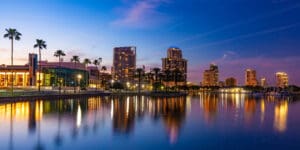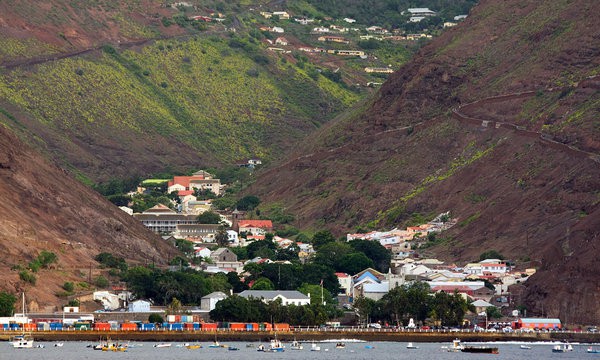 “St Helena: Robust Mooring Field now Available (21 January 2013)”. This headline from noonsite.com recently caught my eye. I was absolutely delighted to read this news because I remember that anchoring on St Helena was a little tricky as it is fairly deep (about 20m or about 65ft) and the holding was not great. We stopped in at St Helena on December 2005 with our Island Spirit 401 Catamaran on our Atlantic crossing from Cape Town to Miami. The leg from Cape Town to St Helena was about 1500 miles and 11 days sailing for us.
“St Helena: Robust Mooring Field now Available (21 January 2013)”. This headline from noonsite.com recently caught my eye. I was absolutely delighted to read this news because I remember that anchoring on St Helena was a little tricky as it is fairly deep (about 20m or about 65ft) and the holding was not great. We stopped in at St Helena on December 2005 with our Island Spirit 401 Catamaran on our Atlantic crossing from Cape Town to Miami. The leg from Cape Town to St Helena was about 1500 miles and 11 days sailing for us.
The island of St Helena 15.55 South 5.43 West (a volcanic island, 47sq miles) is a UK Overseas territory located in the South Atlantic. Arriving at St. Helena in the gloom of the early morning the island seemed to rise from the sea like an old cathedral of volcanic rock shrouded in mist. It is a steep natural fortress and it’s islolation lends itself perfectly to be a place of exile and imprisonments.
It is one of the most isolated, most inaccessible and forbidding-looking places on Earth, 1200 miles from the nearest landmass off the west coast of Africa and can only be reached by mail ship. Napoleon was exiled to the island (also known as Napoleon’s cursed rock) until his death in 1821 and again became a place of exile in 1890 when Dinizulu, the son of Cetewayo the Zulu King, was confined here and again when 6000 Boers from South Africa were imprisoned from 1900 to 1902. I guess it was kind of like the Guantanamo Bay of it’s day.
Today about 3500 people reside on St Helena. There is no airport and regular access to St Helena is provided by the Royal Mail Ship (RMS) St Helena, a 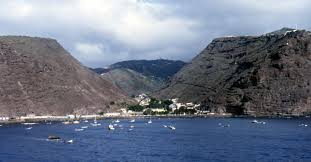 cargo and passenger vessel, every 10 days. We entered Jamestown, the capital of St Helena through the stone archway of the fortress leading to the main square. It dates from 1832 and is embossed with the coat of arms of the British East India Company, which ruled the island for a time, and an image of the wirebird, an indigenous and endangered species (the world’s most rare bird, with only 500 native surviving). Jamestown has a wide main street and Georgian type buildings with purple jacaranda blossoms littering the street like confetti. It is like stepping back in time, following the footsteps of Captain Cook, Blythe, Charles Darwin, the astronomer Arthur Halley and Napoleon.
cargo and passenger vessel, every 10 days. We entered Jamestown, the capital of St Helena through the stone archway of the fortress leading to the main square. It dates from 1832 and is embossed with the coat of arms of the British East India Company, which ruled the island for a time, and an image of the wirebird, an indigenous and endangered species (the world’s most rare bird, with only 500 native surviving). Jamestown has a wide main street and Georgian type buildings with purple jacaranda blossoms littering the street like confetti. It is like stepping back in time, following the footsteps of Captain Cook, Blythe, Charles Darwin, the astronomer Arthur Halley and Napoleon.
The locals are a mix of English and Asian, friendly and welcoming but by no means overly impressed by the sporadic foreign visitor. They speak English fast with a singsong rhythm and use w for v so their very quaint radio station calls itself the “woice” of the South Atlantic and plays a lot of Abba songs. Fronted by trellised verandas, filled with antiques and Napoleonic relics, the Consulate Hotel bar is a favorite watering hole for the somewhat bored locals and the odd visitor. Here you can while the time away while enjoying your gin and tonic with a dash of bitters (pinkies, darling) or a South African beer any time of the day and trade some gossip and ‘get the lay of the land’ so to speak.
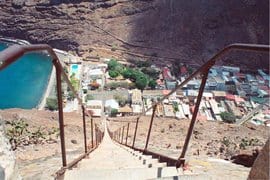 “Jacob’s ladder” with 699 steep steps, was built in 1829 as an inclined plane. It was used to haul manure and trash up the hill, to stop the villagers littering the harbor, and to bring goods down. Wagons were pulled up the inclined plane by a capstan at the top which was powered by mules. The view at the top is amazing.
“Jacob’s ladder” with 699 steep steps, was built in 1829 as an inclined plane. It was used to haul manure and trash up the hill, to stop the villagers littering the harbor, and to bring goods down. Wagons were pulled up the inclined plane by a capstan at the top which was powered by mules. The view at the top is amazing.
The plantation house, built in 1792 by the East India Company is the current residence of the Governor. The land around the house is home to the oldest inhabitant of the island, a giant tortoise named Johnathan. He was brought to the island as a mature adult, which is said to be 50 years old. Presented as a gift from the Seychelles in 1882, making him approximately 178 years young. Being the oldest living animal on the island and thought to be the oldest living example of his breed. There are six giant tortoise´s enjoying the lush surroundings.
The winding road to Sandy Bay on the other side of the island, through the lush tropic grass land, into the stark barren cliffs of the ancient crater of the volcano takes you to the remnants of an old fort situated along the cliffs, with canons lining the hill side.The moonscape appearance as we approached by sea belied the surprisingly green hills and valleys of the interior. It is a land of contrasts and contradictions, the black rocks of Sandy Bay in the south clashing with the green meadows of nearby Mount Pleasant. The tropic sun of Deadwood Plain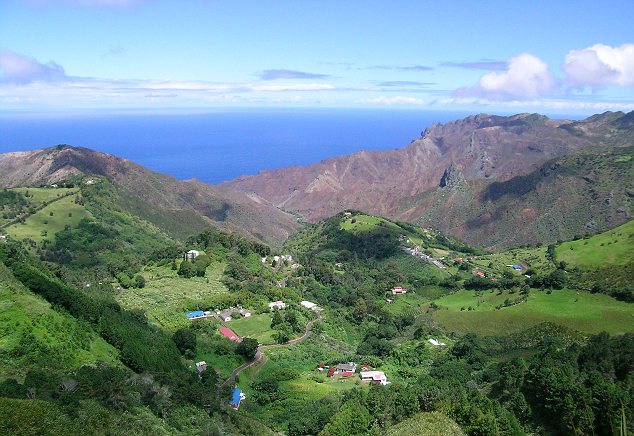 tempered by the shady arbors of Geranium Valley.
tempered by the shady arbors of Geranium Valley.
The Victorian ambience, the historical sites dotted around the island, the English accents and the laid back atmosphere takes one back in time and despite the warm welcome of the local Saints, one really feels the absolute isolation of the island looking out over the ocean with nothing more than endless water and blue sky.
The Governor’s Cup Yacht Race from Cape Town to Jamestown, St Helena as well as the World ARC Rally stop over in St. Helena but many cruising yachts also stop in for a little break, on the crossing from Cape Town to South America, a 3600 mile journey. The new mooring field will make a stop over in St Helena so much more easy and pleasant and stopping on this island was truly a once in a lifetime experience. It should definitely be on every cruiser’s bucket list!





